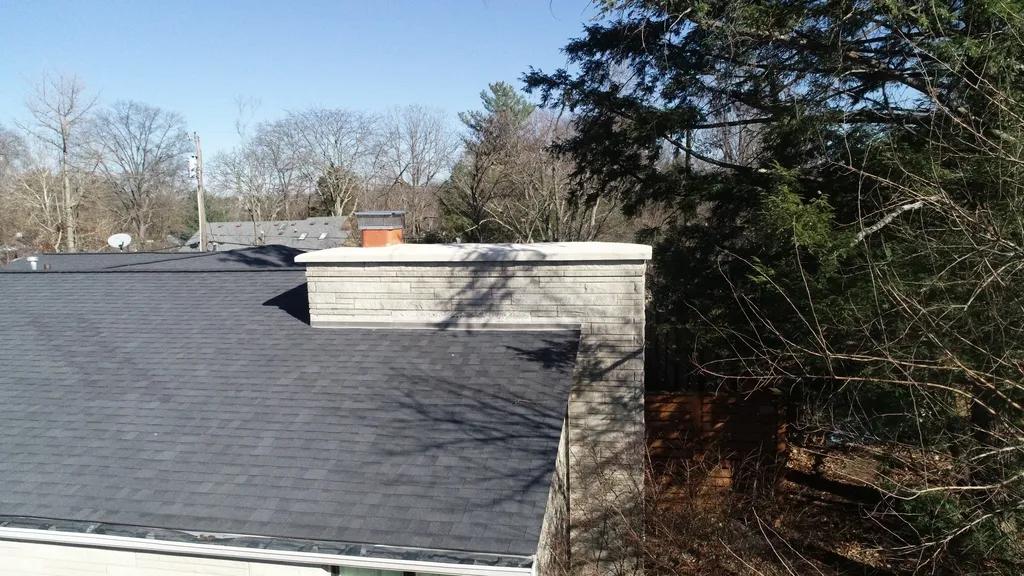Water dripping in chimneys is a common issue that many Ohio homeowners face throughout the year. This seemingly minor problem can lead to serious damage if left untreated. In this article, we will delve into the causes of water dripping in chimneys, the potential consequences, and the steps you can take to address and prevent this issue in your home. Understanding the factors at play is crucial in safeguarding your chimney and maintaining the integrity of your home.
Table of Contents
- Common Causes of Water Dripping in Ohio Chimneys
- Impact of Water Dripping on Chimney Functionality
- Preventive Measures to Avoid Water Dripping in Chimneys
- Professional Solutions for Resolving Water Dripping Issues
- Q&A
- Concluding Remarks

Common Causes of Water Dripping in Ohio Chimneys
Water dripping in Ohio chimneys can be a common issue that homeowners face. Understanding the causes of this problem can help in preventing damage and costly repairs. Some common reasons for water dripping in chimneys include:
- Cracked chimney crown
- Damaged chimney flashing
- Faulty chimney cap
- Leaky chimney liner
It is important to address water dripping in chimneys promptly to avoid further damage to the chimney structure and surrounding areas. Regular chimney inspections and maintenance can help in detecting and fixing these issues before they worsen.

Impact of Water Dripping on Chimney Functionality
Water dripping on chimneys in Ohio can have a significant impact on their functionality. The constant exposure to water can lead to various issues that can affect the overall performance of the chimney. It is crucial to understand these impacts to ensure the proper maintenance and care of your chimney.
Some of the common consequences of water dripping on chimneys include:
- Damage to the masonry and brickwork, leading to structural instability
- Corrosion of metal components such as the chimney cap or liner
- Increased risk of water leaks and moisture damage inside the home
To prevent these issues, it is essential to address any water dripping problems promptly and effectively.

Preventive Measures to Avoid Water Dripping in Chimneys
Water dripping in chimneys can be a common issue, especially in Ohio where the weather can be unpredictable. To prevent this problem, homeowners should take certain preventive measures to ensure their chimney remains dry and functional. Here are some tips to avoid water dripping in chimneys:
- Install a chimney cap: A chimney cap is a simple yet effective way to prevent water from entering the chimney. It also keeps out debris, animals, and prevents downdrafts.
- Regular chimney inspections: It is important to have your chimney inspected at least once a year to check for any damage or signs of water leakage. A professional chimney sweep can identify any issues and make necessary repairs to prevent water dripping.
- Waterproofing treatment: Applying a waterproofing treatment to the exterior of the chimney can help prevent water penetration and prolong the life of the chimney.
| Preventive Measure | Effectiveness |
|---|---|
| Installing a chimney cap | Highly effective in preventing water intrusion |
| Regular chimney inspections | Helps identify issues early on before they worsen |
| Waterproofing treatment | Protects the chimney from water damage |

Professional Solutions for Resolving Water Dripping Issues
Water dripping issues in Ohio chimneys can be a common problem, especially during rainy seasons. The combination of heavy rainfall and aging chimney structures can lead to water leaks and drips inside your home. Understanding the causes of water dripping in chimneys is crucial for implementing professional solutions to prevent further damage.
To address water dripping issues in Ohio chimneys, it is essential to identify the root cause of the problem. Common reasons for water leaks in chimneys include:
- Cracked chimney crown
- Deteriorated chimney flashing
- Missing or damaged chimney cap
- Improper chimney construction
By consulting with a professional chimney repair service in Ohio, you can effectively resolve water dripping issues in your chimney. Professional solutions such as chimney crown repairs, flashing replacement, and chimney cap installation can help prevent water leaks and protect your home from water damage.
Q&A
Q: What are the common causes of water dripping in Ohio chimneys?
A: Water dripping in Ohio chimneys is often caused by a combination of factors such as damaged chimney caps, cracked chimney crowns, deteriorated mortar joints, and poorly installed flashing.
Q: How does water infiltration affect chimneys in Ohio?
A: Water infiltration can lead to a host of issues including chimney fires, structural damage, mold growth, and chimney leaks.
Q: How can homeowners prevent water dripping in their chimneys?
A: Homeowners can prevent water dripping in their chimneys by regularly inspecting and maintaining their chimneys, ensuring proper installation of chimney caps and flashing, and repairing any damaged mortar joints or chimney crowns.
Q: What are the signs that water is infiltrating a chimney?
A: Signs of water infiltration in a chimney include water dripping into the fireplace, musty odors, efflorescence on bricks, rust on the damper or fireplace doors, and water stains on the walls or ceiling around the fireplace.
Q: What should homeowners do if they notice water dripping in their chimneys?
A: Homeowners should contact a professional chimney sweep to inspect and assess the source of the water infiltration, make necessary repairs, and prevent further damage to the chimney and home.
Concluding Remarks
In conclusion, understanding water dripping in Ohio chimneys is crucial in maintaining the structural integrity and safety of your home. By recognizing the common causes of leaks and taking proactive steps to address them, you can prevent costly water damage and preserve the functionality of your chimney. Regular inspections and maintenance, along with proper installation and repairs, are key to ensure that your chimney remains in optimal condition. Remember, a small drip today can lead to a major issue tomorrow – so be proactive in protecting your chimney from water damage. Thank you for reading and we hope this article has provided you with valuable insights into this important topic.


